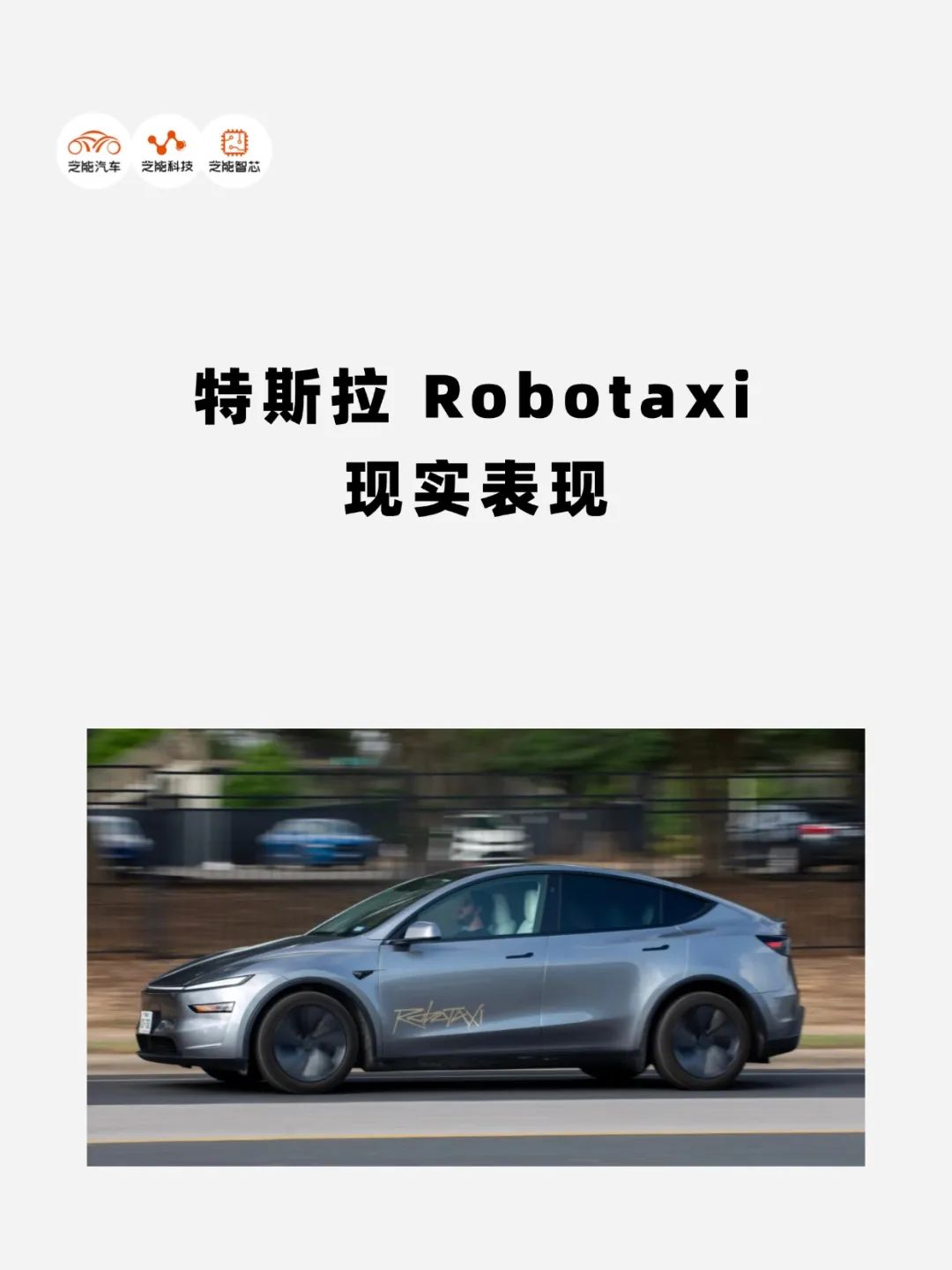Tesla Robotaxi's Real-World Performance: Bridging the Gap Between Product Validation and Technological Ideals
![]() 06/30 2025
06/30 2025
![]() 659
659
Produced by Chi Energy Technology
In 2025, Tesla launched a pilot Robotaxi service in Austin, signifying a pivotal moment in the commercialization of autonomous technology through its Full Self-Driving (FSD) system.
Analyzing the behavior of numerous test vehicles, functional intricacies, and passenger feedback reveals a considerable discrepancy between Tesla's technological maturity and the "ideal" it consistently champions on social platforms.

01 Actual Road Test Performance: Critical Issues Uncovered Across Multiple Scenarios
Tesla's Robotaxi service is currently operational in Austin, Texas, with a fixed fare of $4.20, available to early invitees. The vehicles deployed are autonomous Model Ys, accompanied by safety drivers in the front passenger seat.
Initial road test feedback indicates that while no major accidents occurred, issues such as "frequent safety driver interventions," "chaotic route decisions," "erratic braking strategies," and "speeding" arose, sparking widespread discussion.
Technical insights from passenger video recordings highlight the following issues:
◎ Path Control Errors: The vehicle displayed conflicting behavior of "false turn signals without direction changes" during turns, once straying into the opposite lane. Without manual intervention from the safety driver, this could have led to a collision.
◎ Unnecessary Emergency Braking: The vehicle unexpectedly decelerated upon encountering static police cars at a distance or in the absence of obvious obstacles, providing a poor passenger experience and affecting the safety of following vehicles.
◎ Insufficient Lane Keeping Ability: Constant steering adjustments and the vehicle "swerving left and right" became common. Multiple instances of briefly entering no-entry zones were recorded, suggesting the system struggles with high-precision lane centering.
◎ Speeding: Speeds exceeding 35 mph were observed in multiple speed-limited areas (e.g., 20 mph zones), indicating instability in the system's recognition and enforcement of speed limits.
These phenomena are not isolated but consistently appear in records from multiple independent passengers and bloggers, indicating room for improvement in Tesla's L4 capabilities.
02 Technological System, Hardware, and Algorithm Competencies
From a technical standpoint, Tesla's FSD system stands out as one of the few L4 solutions adhering to a pure vision perception approach, relying solely on multiple cameras for image processing, object detection, path planning, and decision-making control.
However, the Robotaxi tests revealed that the vision system is prone to misidentification and delayed responses in complex scenarios.
In recognizing roadside static objects (like police cars) or temporary construction barriers, the vehicle often executes "overreactive" braking, reflecting the model's current inability to differentiate between "static and dynamic obstacles."
Furthermore, in scenarios with "strong semantic dependencies" such as traffic signals and pedestrian crossing behavior, the pure vision approach has limited contextual understanding, increasing the likelihood of abnormal behaviors.
Regarding hardware, the Model Y Robotaxi eschews LiDAR or high-precision maps, adhering to Tesla's "end-to-end AI + edge cameras" approach. However, the absence of redundant perception mechanisms means the system lacks fault tolerance and alternative solutions when the vision system encounters obscured cameras, low light, rain, or snow.
Although Tesla's FSD incorporates end-to-end large models and training platforms, the path planning errors and misjudgments of traffic rules exposed by the Robotaxi indicate that the system has yet to establish an "interpretable, reasonable" generalized world model.
From a marketing perspective, Tesla's Robotaxi project employs a typical "fans + social media" promotional model, leveraging spontaneously posted short videos on social media platforms and fan blogs to achieve "point-to-area" viral spread.
While this strategy ensures short-term traffic explosiveness, it fails to conceal the inconsistency in technical performance.
For instance, numerous social media videos showcased "near-perfect" Robotaxi operations, but subsequently shared footage of speeding, erratic steering, and attempted wrong-way driving quickly created a "reality check" effect.
This contrast not only undermines Tesla's technical credibility but also clouds the public's fundamental understanding of whether "L4-level autonomous driving is ready."
Tesla's CEO described this Robotaxi as the "culmination of a decade's effort," but in terms of actual performance, its system stability, safety fault tolerance, and public opinion control are still in the Beta stage. This promotional style of presenting beta products as ultimate achievements may strain its regulatory scrutiny and public trust in the future.
03 NHTSA's Concerns
The National Highway Traffic Safety Administration (NHTSA) recently announced a preliminary investigation into abnormal driving incidents involving Tesla's Robotaxi in Austin.
This decision stems from multiple user-uploaded videos showing Tesla's autonomous vehicles exhibiting behaviors such as speeding, wrong-lane driving, and unnecessary emergency braking during operations.
Some footage even captured vehicles autonomously driving into the opposite lane and then correcting without interference from other traffic, highlighting the system's instability in route judgment and lack of redundant mechanisms.
The NHTSA has made it clear that it does not pre-approve any autonomous driving technology but relies on post-accident analysis and data-driven investigations. This "ride before regulation" model places heightened demands on public safety as Robotaxis advance towards commercial operations.
Moreover, Tesla's so-called "Beta testing" is already directly impacting thousands of pedestrians and drivers in Austin, undoubtedly blurring the line between public roads and closed test sites.
Autonomous driving is not merely an experiment for tech enthusiasts but a systematic engineering project impacting the safety of millions. Tesla's pace of Robotaxi deployment and promotional approach are challenging regulatory boundaries and calling for a more prudent product responsibility framework.
Summary
Based on the Robotaxi's performance in Austin, Tesla has indeed taken a significant step forward in commercialization, demonstrating the partial feasibility of its technological system for urban operations. However, a notable gap persists between product capabilities, system stability, and public perception.
As a high-risk, highly coupled, and high-investment system engineering project, Robotaxi must prioritize safety, stability, and verifiability over hasty market influence gains.







